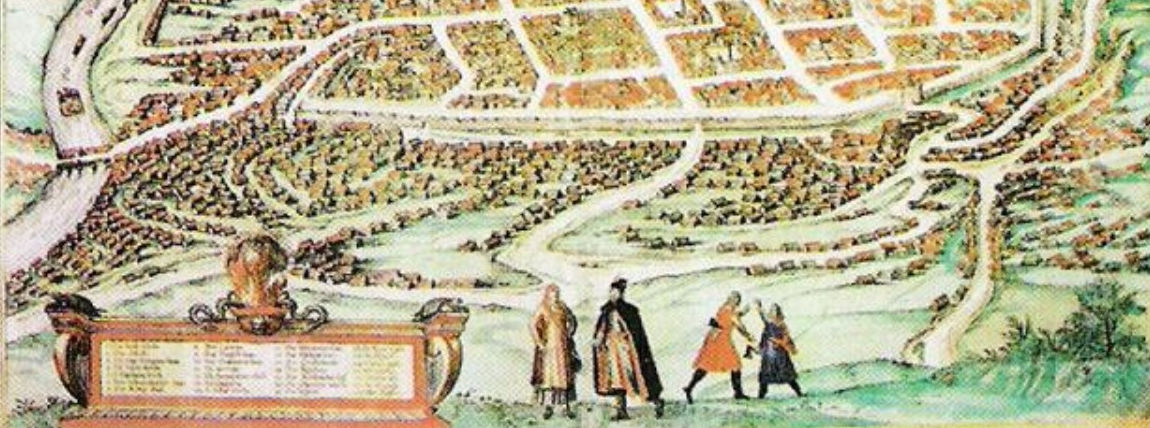Slushka Palace Garden
Former Slushka Palace Garden in Antakalnis. The garden was set up at the end of the 17th&c. Southwest of the palace between today’s T.Kosciuškos street and bank of River Neris. It had geometrical landscaping with clipped box-tree quadrangle mazes and perpendicularly intersecting paths. By the end of the 18th c. this was one of the best maintained “Italian” style Vilnius residential palace parks. With the change in palace ownership, and with the military services taking over the palace at the beginning, the park deteriorated. The only survivor of the garden was a broad landscaped band by the street. Today the undeveloped part of the garden displays a square.
![]()
Missionary Church and Monastery Garden
Former Missionary Church and Monastery Garden. Initially set up in mid 17th c. as a palace park of nobleman and patron of arts J.Sangushka, in 1686 the palace with the park and ponds were donated to missionary monks. It was set on the elevation east of the monastery along Subačiaus street. The garden boasted the famous water springs at the foot of the Saviour’s Mountain, that it time began to be called the Missionaries’ Springs. A wonderful view of Vilnius opened up from here. Horticultural and fruit gardens were located on the hill terrace. The garden layout was strictly regular with almost the same size quadrangular lawns. The central alley was crossed perpendicular by three paths, with the oval square built in the central intersection. In the garden in the valley of River Vilnia there ponds with plenty of fish, the surplus water of which was flowing by underground piping to Vilnia. In mid 19th c. the garden was densely grown with huge trees. In the 19th apple, pear, plum and cherry trees and gooseberry and currant bushes were growing in the garden, and poplars and maple trees in the park. At the beginning of the 20th c. the springs lost their significance, the ponds, though, remained an important element of the park still called the Missionaries’ Park and liked by citizens. In the between-world-war period the park was returned to the missionaries. Old Vilnius citizens recall that the part had a gardener and a pond caretaker. The part was damaged during the 2nd World war, with its further destruction continuing after the War. Part of the Missionaries’ Park became a road that appeared as an extension to Maironio street which severed the park into two parts and disrupted the pond system. The former park territory became a wasteland overgrown with bushes.








